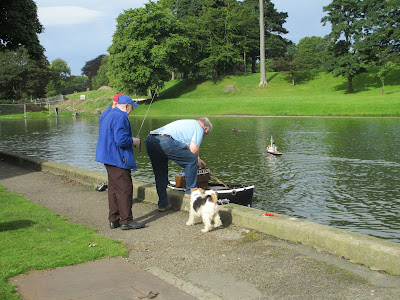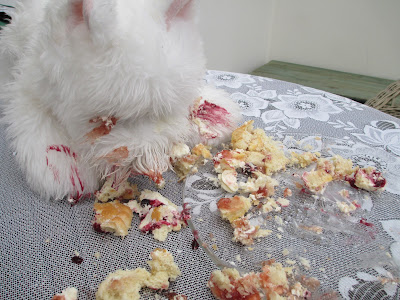I have been on an important mission these last few days, for which I hope to be handsomely rewarded.
Let me explain the context.
Do you remember my friends border terrier Bonnie and poodle Jack? They live just down the street from me with their humans Mike and Kirsty.
Well Mike is contemplating buying some land on the island of Islay (Kirsty's home territory) and planting a forest there, comprising only native Scottish trees. Apparently you can get government grants for this sort of thing.
As you may be aware, Islay is better known for whisky (Laphroaig, Lagavulin, Bowmore, Ardbeg, Bunnahabhain, Caol Ila etc.) than for forestry, and naturally, having heard of my very important ongoing role as Associate Webguide Volunteer for the VisitWoods project, Mike was keen to enlist my services as advisor to the new venture.
Well it just so happens that in the area around our Loch Torridon cottage, several similar woodland projects have taken root over the past decade. Torridon, like Islay, is on the west coast of Scotland and poses many of the same environmental challenges to the would-be forester - wet weather, low levels of sunlight, frequent gales, nutrient poor soils, biting midges...
So anyway, I decided to go over and inspect the progress of the trees planted on the north shore of Loch Torridon eight years ago, and compile a report for Mike. The results are presented below:
Bertie's report for Mike
First, I would like to point out that these plantations must all be fenced off so that sheep and deer cannot nibble away at the saplings. This is totally brilliant because it means that, within their boundaries I am always allowed off the lead and can run free. (Gail has this 'thing' about me running after sheep and deer). Of course, if all goes well, in a few years the woods will be populated with red squirrels and pine martens which

Secondly, as is clear from the photos below, even at a young age, the trees add texture and variety to the landscape. Thus humans enjoy going for walks in these new woodlands, which is always a positive from a canine perspective.


Furthermore, when the trees finally mature they form a partial canopy, kind of like an umbrella, and provide protection from stormy weather, thus eliminating at least one common human excuse for not exercising their dog(s). See this example from the Beinn Eighe Nature Reserve.

Thirdly, it appears that the new Torridon trees are thriving, in particular the Scots pines. Note that, for formal surveys, it is always useful to take along a wire-haired fox terrier, shoulder heights 43 cm, for scale.

Finally, all forests are of course a 'carbon sink', sucking carbon dioxide out of the air and so reducing the chances that Scotland will ever become too hot for a wire-haired fox terrier to enjoy year round romps over our beautiful countryside.

So, in conclusion, these new areas of native woodland are great for dogs and the more we plant the better.
My recommendation is that the Islay forest project should proceed as soon as it is practicable to arrange for Bonnie, Jack and me to travel over to the island to supervise. Am I right in understanding that dogs go for free on the ferry? Oh and I believe that Gail would like to come to, she mentioned something about a distillery visit....
THE END
Well, I think Mike should be pleased with this comprehensive report, don't you? I wonder how much I should charge him?
What's that? Gail is saying that I have neglected the first rule of report writing for clients, which is, apparently, writing about things that are important to them, rather than focussing on one's own priorities. And that I will be fortunate to earn a single dog biscuit for my efforts, much less an expenses paid trip to Islay...



















.JPG)




































